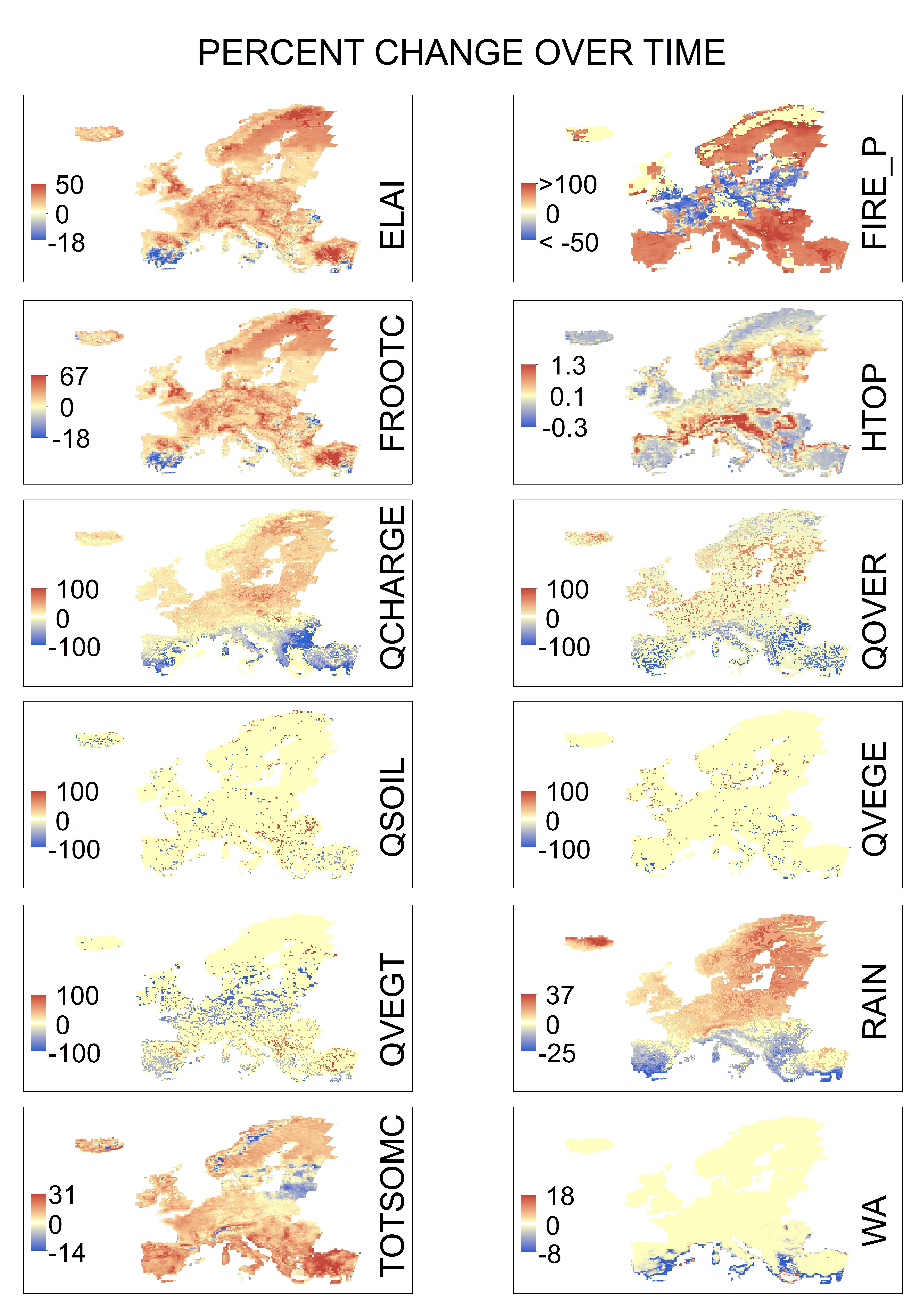
CLM model outcomes showing climate-induced percent change between 2050 and the baseline, for the bio-physical variables used as inputs of the ES-BN models. See Table 1 for a definition of the variable names. The magnitude and spatial extent of change can be categorised in five main patterns: (1) Great magnitude of change, widely spread across the study area (FIRE_P and QCHARGE); (2) Great magnitude of change for very limited regions, and the majority of the regions laying around small changes (QOVER, QSOIL, QVEGE and QVEGT); (3) Small magnitude of change, but widely spread across the study area (e.g. ELAI, FROOTC, RAIN, TOTSOMC); (4) Small magnitude of change, spatially localised (WA); (5) Very small change, but widely spread (HTOP). Distribution maps are displayed using non-projected Geographic Reference System (WGS84 Datum).